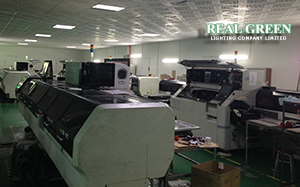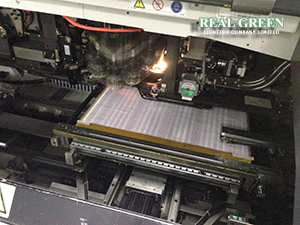LED Color

In an ordinary light bulb, electrical energy heats up a tiny metal filament so hot that it glows. The heat itself makes the filament emit light, and the hotter the filament, the greater and whiter the light and the shorter the lamp life. The heat produces a wide spectrum of different colors that we can call "white," but our cameras show us that incandescent light is more red whereas natural outside light is more blue.
We can put colored filters around incandescent lights to change their apparent light color. The filters, typically of dyed translucent plastic or coating, transmit a subset range of light frequencies that we see as a particular color. Since the filters reject other light frequencies, only a part of the total gets through, so the result is dimmer. And a light filter can only select light frequencies to pass and reject; it cannot create light frequencies that did not already exist. So if we want blue or violet from an incandescent light, we have a problem, because there is just not much blue there in the first place.
In a colored LED, selected semiconductor materials produce only a narrow range of pure color frequencies. Filtering colored LED light is not particularly helpful, since there are no unwanted frequencies to be filtered out. In general, we cannot change the color of LED light with filtering as we can with incandescent light. Manufacturers do tend to use colored diffusers with colored LED strings, but those have little effect on the operating color. Presumably the colored diffusers are what the public expects, and also are useful in manufacturing when heaps of bulbs get tipped over and mixed. Diffusers are helpful because the high-output LEDs tend to produce a beam or narrow cone of light which we might want to deflect in many directions.
The white LED bulb is a special case: The white light produced by a white LED is fluorescent light, at least in part. Typically, bright yellow fluorescent phosphors are activated by a high-efficiency blue LED, and the result includes yellow (with some orange and red) as well as the original blue. Even though the result is white-ish, it does not cover the full incandescent spectrum, so filtering may be disappointing.
LED Failure
LEDs are semiconductor diodes, and diodes almost always fail as a short (a "short circuit," a low resistance path). Shorting upon failure conveniently takes the place of the "shunts" added to series string incandescent mini bulbs, because those shunts often fail to work. One of the hardest problems in mini light repair is to find which one of all the bulbs in a series circuit has burnt out with a shunt that did not short out like it should. The failing open problem should be rare with LEDs, but sometimes the tiny bond wires do break, especially if excess heat softens the plastic and allows the external leads to shift.

LED strings can fail when LED leads corrode or wires break or fuses blow. Then a whole string or perhaps a half-string circuit would go out. Fixing any broken circuit involves locating the break, then repairing it. Unfortunately, locating a break in an LED string can be more challenging than in an incandescent string, because each LED reduces the overall voltage and modifies any test signal.
The rated life for these LED bulbs is given as 25,000 hrs, average, but that may sound like more than it really is. For example, we are running 7 strings of 60 bulbs each, 24/7. That is 7 strings * 60 LEDs-per-string = 420 LEDs, for 24 hours-per-day * 7 days-per-week = 168 hours-per-week. So we burn 420 LEDs * 168 hours-per-week = 70,560 LED hours-per-week, which could imply a failure rate of almost 3 bulbs per week. And, indeed, 3 bulbs per week is the failure rate actually observed.
Normally, however, when manufacturers talk about LED "failure" over time, they are not talking about LEDs actually going dark, as many of the Philips LEDs do. Instead, LEDs normally do not die, but simply get dimmer to a point where the result is no longer acceptable. In these Philips strings, one might hope that would mean 25,000 hrs for each LED, or 25,000 hrs/168 hours-per-week = 149 weeks or about 3 years of continuous full-power operation. Unfortunately, the high rate of LED total failure in these Philips strings has obscured any LED fading issues.
From A Ciphers By Ritter Page by Terry Ritter 2007 May 24

